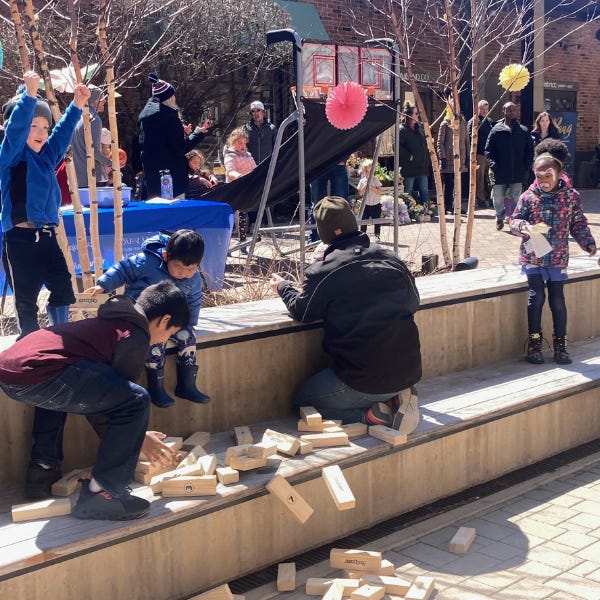The Musicant Group’s work is guided by a focus on experiences and a dynamic process rather than a static one which creates places through individual “design items.” We focus on the relationships between elements of a space, and witness how the denser the web of these relationships, the more active and vibrant a space will be.
One framework which illustrates this idea, and acts as a constant guide to our placemaking practice, is the 6 Design Relationships (inspired by the work of Christopher Alexander):
1. Add (Moveable) Seating
If people can’t sit down comfortably, they won’t stick around. Providing moveable seating, in particular, creates flexibility for users, allowing them to position themselves most comfortably and interact with the space in a way which best accommodates their needs.
2. Protect Your Back
Having a structure behind you – like a house, ledge, or hedge makes one feel comfortable. Protecting your back prevents being surprised (or the subconscious fear of being surprised) and ensures a good view out into the rest of the space and the activities happening there.


3. Use Semi-Enclosures
Spaces which are too open make us feel exposed; too closed, and we feel cut off or trapped. A semi-enclosure, such as a good porch or a cozy booth at a restaurant, feels good. These spaces allow you to choose whether to be social or private without even moving an inch.
4. Have Many Things To Do
It may sound obvious, but if there aren’t things to do in a space, people may not have reason to go there. While creating great places, make sure there are things to do, and place activities close enough together so that there's spillover from one activity to the next. People want to be around other people participating in activities, so placing them nearby allows for foot traffic to increase density, and for more people to congregate.


5. Consider Climate
There are many outdoor places where climate and temperature are a huge variable to be considered. Being able to support people's comfort on different days of the year is an important part of a good place. Factor in how sun, shade, cold and precipitation interact with the planned activities in your spaces to ensure the best experiences for the people inhabiting them.
6. Active Edges
We think of boarders as dividing, but borders also bind things together. Having activities along the border of a space connects and attracts people from different areas of that space, lending to flow and interactivity. Borders are any places that touch a sidewalk or walkway, such as storefronts, park entrances, patios, and front yards, and can all be brought to life to bring people deeper into a space and be vibrant in and of themselves.







As a place writer with a background in interior design, I'm delighted to see this Substack. Considered design is crucial to feeling safe and secure in public and private spaces. I know I'll find lots of interest in your posts.